Notes on these images. Images acquired using SBIG STL-11000M, ST-10XME or ST-2000XM cameras with the appropriate color filter wheel at prime focus (generally binned 2x2). Telescopes used include a 6" refractor or 24" R-C reflector at Star Hill, New Mexico or a Takahashi FRC-300 at New Mexico Skies. The rest of the images were acquired using a 4" Televue refractor (NP101), or a 10" or 14" Meade LX-200GPS telescope at Morristown, NJ.

This L-Ha-RGB image of IC 1396 (Elephant Trunk Nebula) in Cepheus was taken in September, 2008, at New Mexico Skies using a Takahashi FRC-300 reflector telescope fitted with an SBIG STL-11000M wide-format camera riding on a Paramount ME. The total exposure time was 2.25 Hrs.
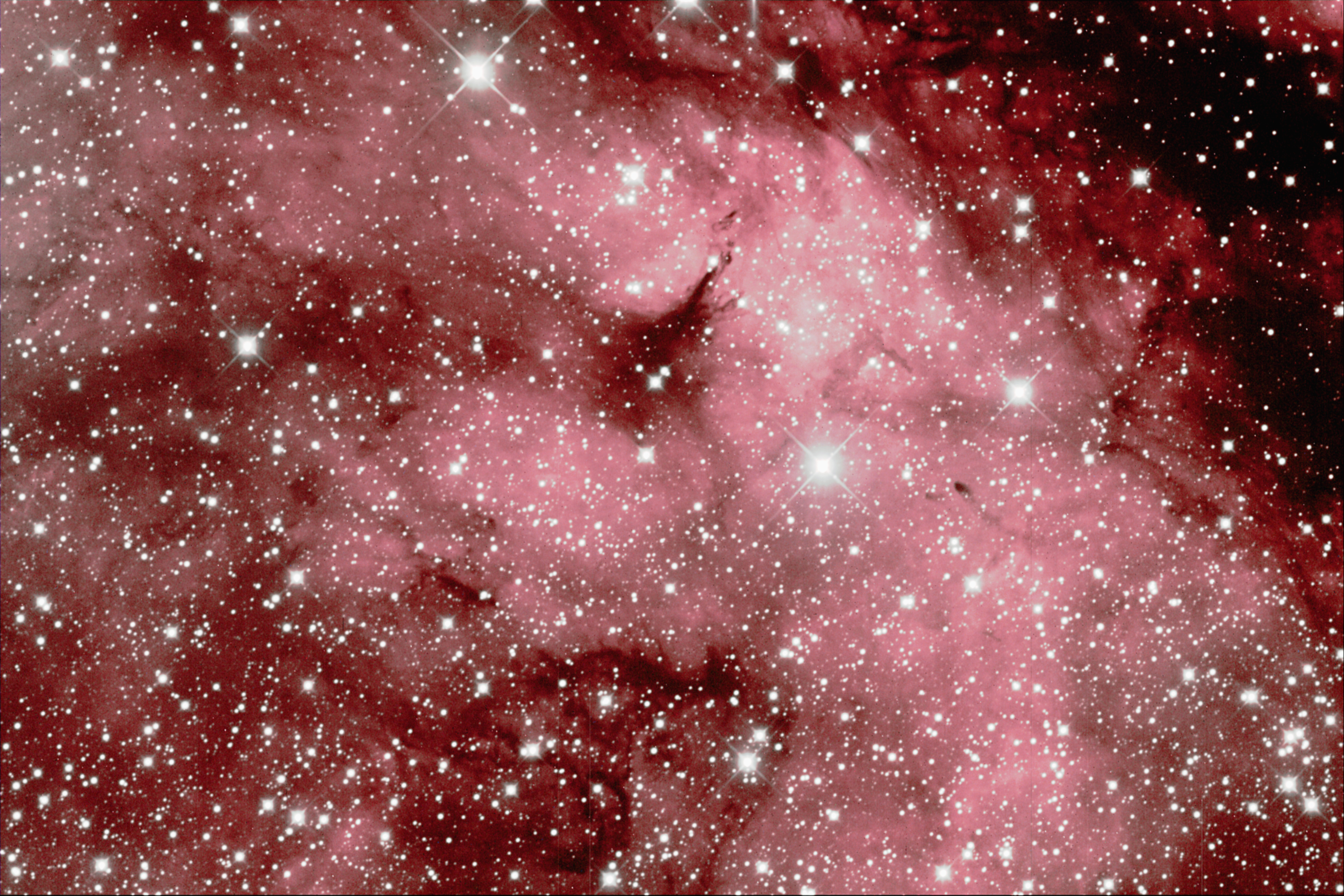
This is an L-Ha-RGB image of part of the gamma Cygnus nebula, taken in September, 2008, at New Mexico Skies using a Takahashi FRC-300 reflector telescope fitted with an SBIG STL-11000M wide-format camera riding on a Paramount ME. The total exposure time was 2.25 Hrs.
This HaRGB image of the Rosette Nebula was taken at Morristown in November, 2006, using the Televue NP101 refractor with the SBIG ST-10XME camera. This nebula is a one degree wide object consisting of a central open star cluster surrounded by vast clouds of dust and gas. The stars in the central cluster are only recently formed from the nebular matter and provide the energy source to power the colorful emissions. The object is about 5,500 light years distant and is probably about 130 light years across.
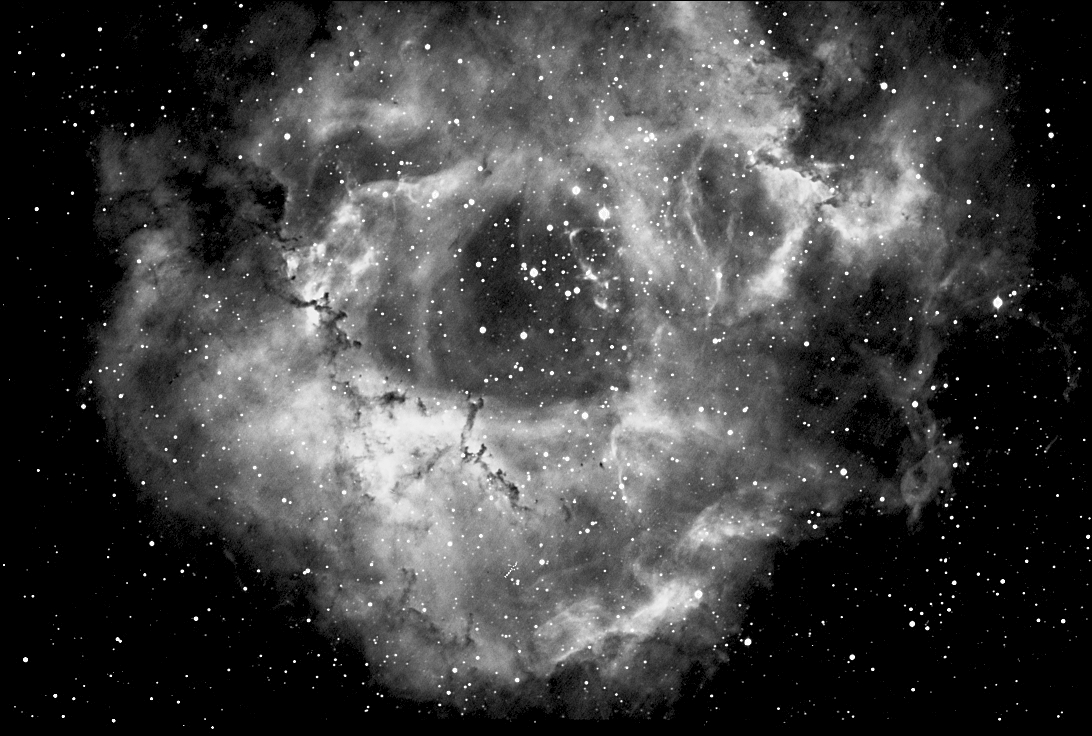
This is an Ha-only image of the Rosette Nebula taken at Star Hill in October, 2007, using the Televue NP-101 and the SBIG ST-10XME camera mounted piggybacked on the 24" RC.

This is M8 (Lagoon Nebula) which is visually a very complex collection of stars and emission nebula in Sagittarius. The nest of bright hot young stars to the left of the image powers the emission seen in much of the region and is separated from the rest of the glowing mass by several well defined dust lanes. This image was taken using the 6" refractor piggybacked on the 24" R-C telescope at Star Hill, New Mexico, in October, 2005.

This much wider field view of the Lagoon Nebula was taken using the Televue NP101 telescope riding on a Losmandy Gemini mount at Star Hill, New Mexico in October 2006.

M20 the Triffid Nebula in Sagittarius. This raw, unprocessed image was taken using the Televue NP101 telescope with the SBIG ST-10XME+CFW-8 camera at Star Hill, New Mexico, in October, 2007. This wide-field view shows the star-rich setting of this colorful object.
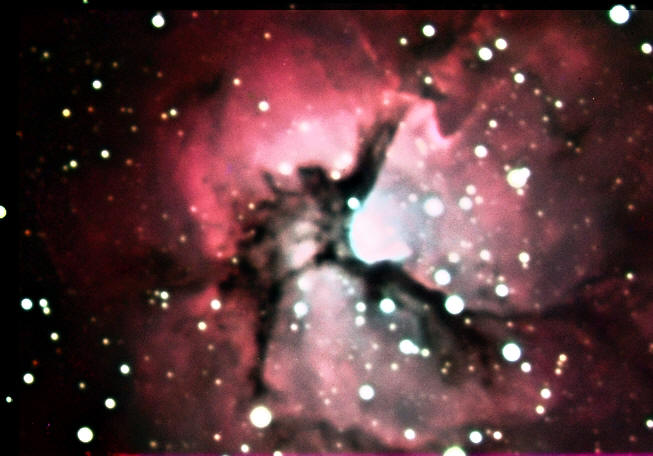
A closer view of M20 is shown here. The central region of this emission/reflection nebula with its central star cluster is is more prominent at this higher magnification. The radial dust lanes appear to divide the object into three parts, hence the name. This image was taken using the 24" R-C telescope with the SBIG ST-10+CFW-8 at Star Hill, New Mexico, in October, 2005.
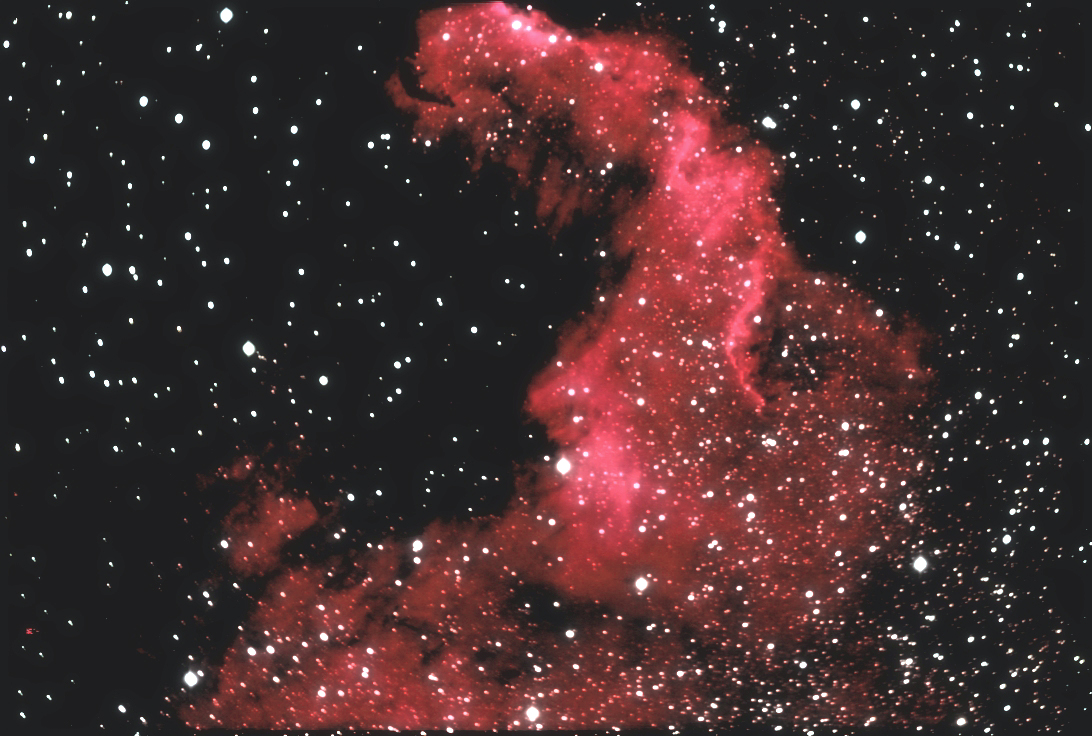
This is part of NGC 7000, the very large North American Nebula in Cygnus. The Central America and isthmus of Panama regions are shown here (south is up). This L-Ha-RGB image was taken in October, 2007, at Star Hill, New Mexico, using the Televue NP101 and SBIG ST-10XME camera.
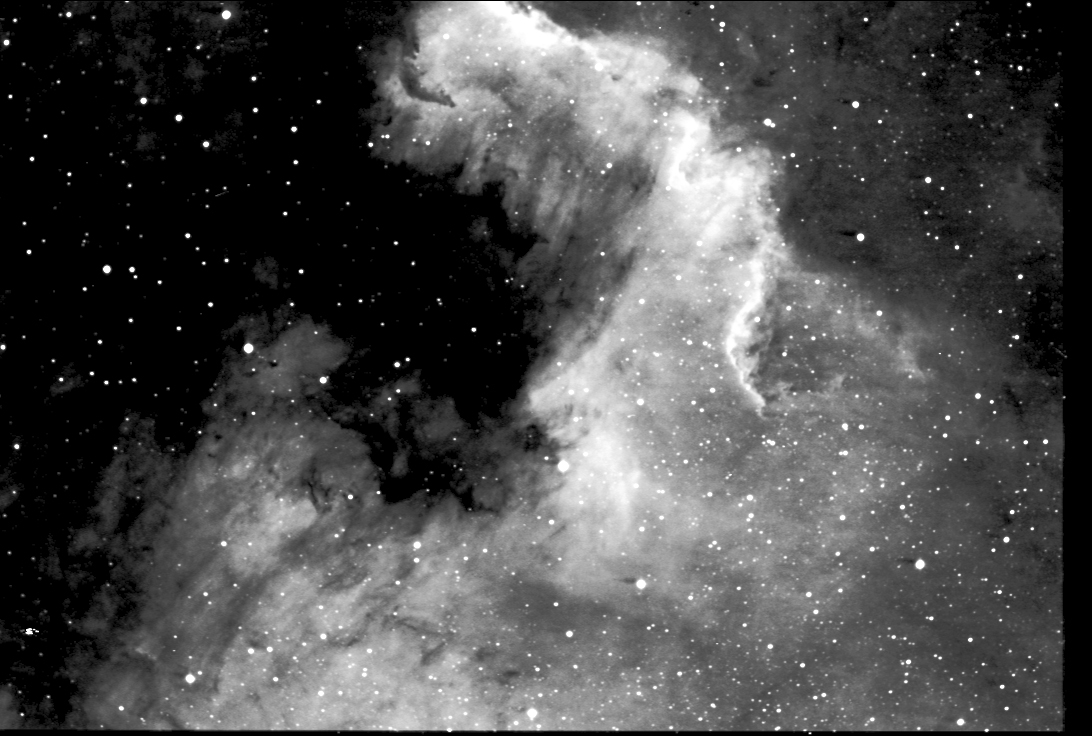
This is a Ha - only image of the same region of NGC 7000 as described above. Far more fine detail is emerges when viewed through this relatively narrow band filter. The image was taken in October, 2007, at Star Hill, New Mexico, using the Televue NP101 and SBIG ST-10XME camera.
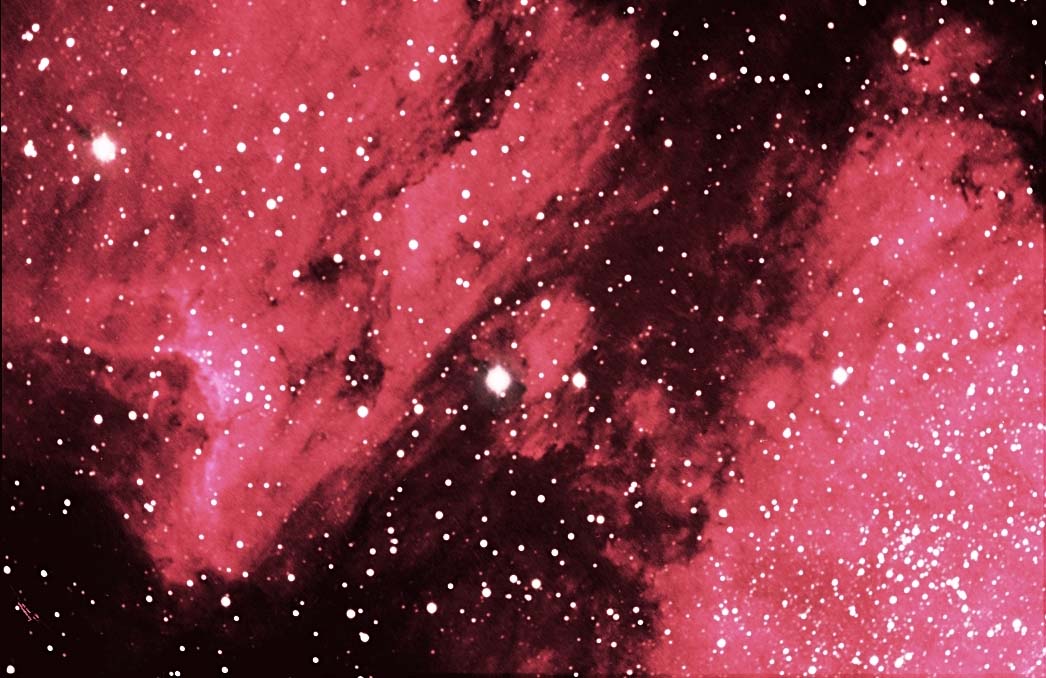
This is an LHaRGB image of object IC5070, or the Pelican Nebula region of the North American Nebula in Cygnus. This region is divided from the larger part of the North American Nebula by a dust lane. Taken in October, 2007, at Star Hill, New Mexico, using the Televue NP101 and SBIG ST-10XME camera.

M16, the famous Eagle Nebula in Serpens Taken at the Star Hill Observatory in October, 2005, using the 24" R-C reflector at f/8. The 'Pillars of Creation' region is in the lower center section of the image. This photo is a 9X stacked LRGB image, taken with the SBIG ST-10+CFW-8 while the object was very low in the west, with a 1/4 moon within 20 degrees.
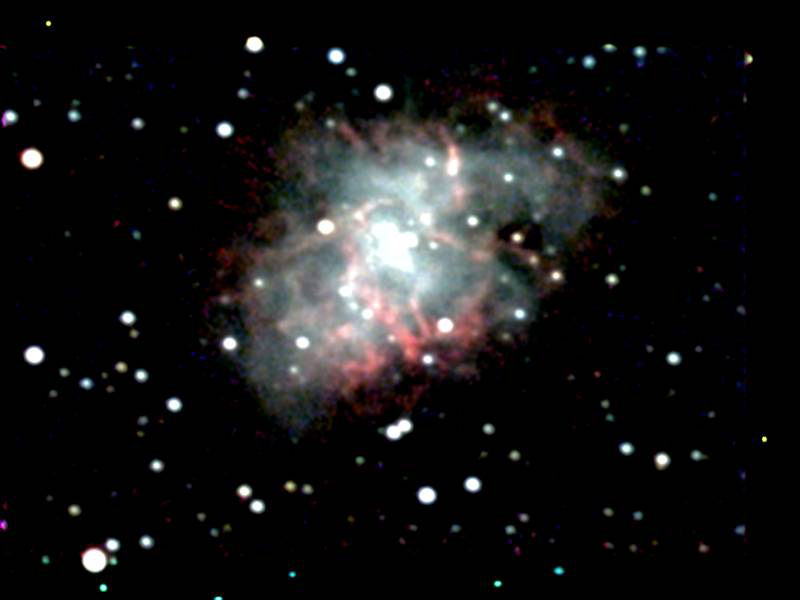
M1 the Crab Nebula, a supernova remnant. Taken in October, 2004, at the Star Hill Observatory with the 24" R-C telescope (f/8). 10 - 12 LRGB (each) images were combined to yield this picture.
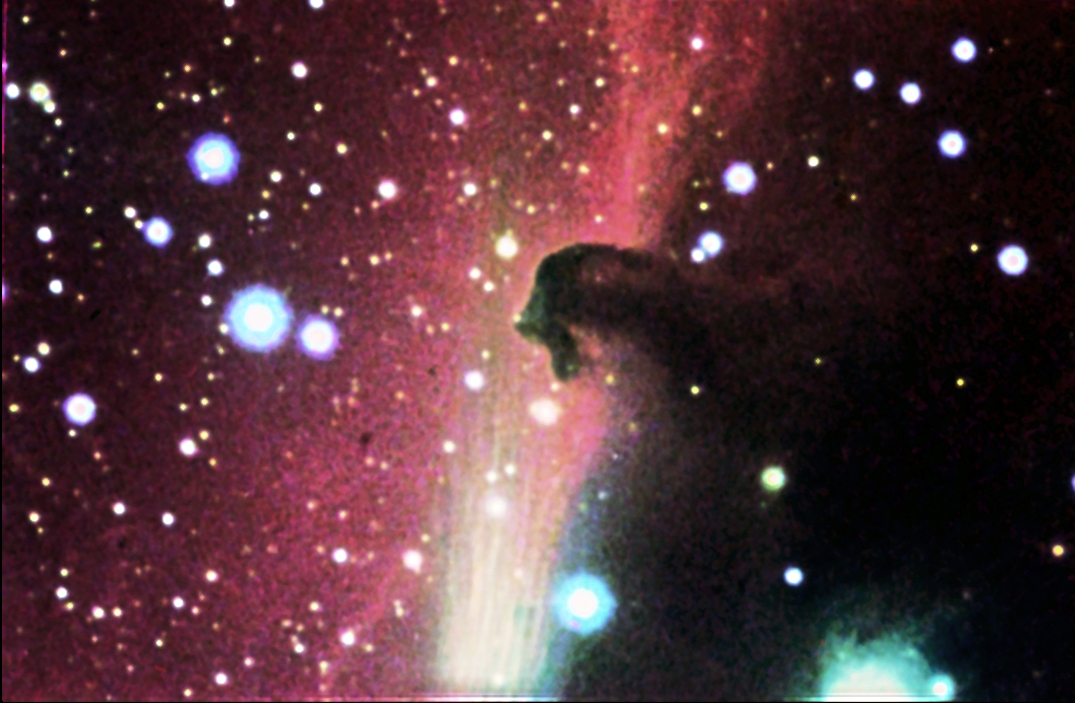
The Horsehead Nebula (Barnard 33) is about 1,600 light years away in the direction of the constellation Orion. A dark region of obscuring dust blocks the background luminous gas, producing the illusion of a horse head in silhouette. This image was taken using the 6" refractor piggybacked on the 24" R-C telescope at Star Hill, New Mexico, in October, 2005.

NGC 7635 the Bubble Nebula in Cassiopeia. This object is actually a bright emission/ reflection nebula. The 'bubble' is about 10 light years across and is represents the blast front of a rapidly expanding ball of ionized gas. Taken in October, 2004, at the Star Hill Observatory with the 24" R-C telescope (f/8). 10 - 12 to 20 LRGB (each) images were combined for this picture.

Part of the Eastern Veil Nebula (NGC 6992) complex in Cygnus. This very diffuse nebula, along with the western part, is thought to be remnants of a supernova which exploded about 50,000 years ago. Taken at Morristown with the 14" LX200GPS in late September, 2005.


These wider field LRGB+Ha (top) and Ha-only images of the Eastern Veil Nebula was taken at Morristown in September, 2006, using the Televue NP101 refractor with the SBIG ST-10XME camera.
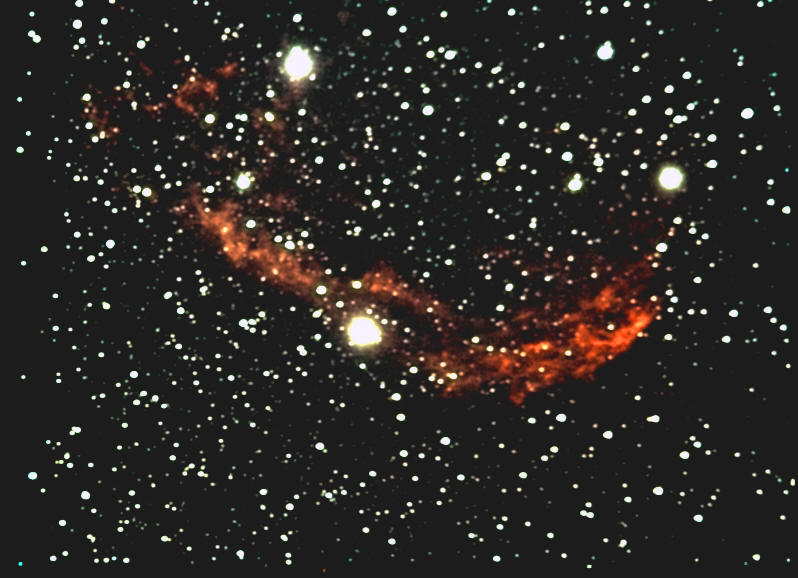
NGC 6888 the Crescent Nebula in Cygnus. This object is an older planetary/emission nebula, which in longer exposures appears to be a nearly closed ellipse. The crescent or arc seen in this image shows the dissipating wave front of ionized gas. Not apparent here is the background emission nebulosity. This remnant is about 4700 light years away. Taken in September, 2005, at Morristown with the 14" Meade LX200 (f/6.3). 15 to 20 LRGB (each) images were combined for this picture.
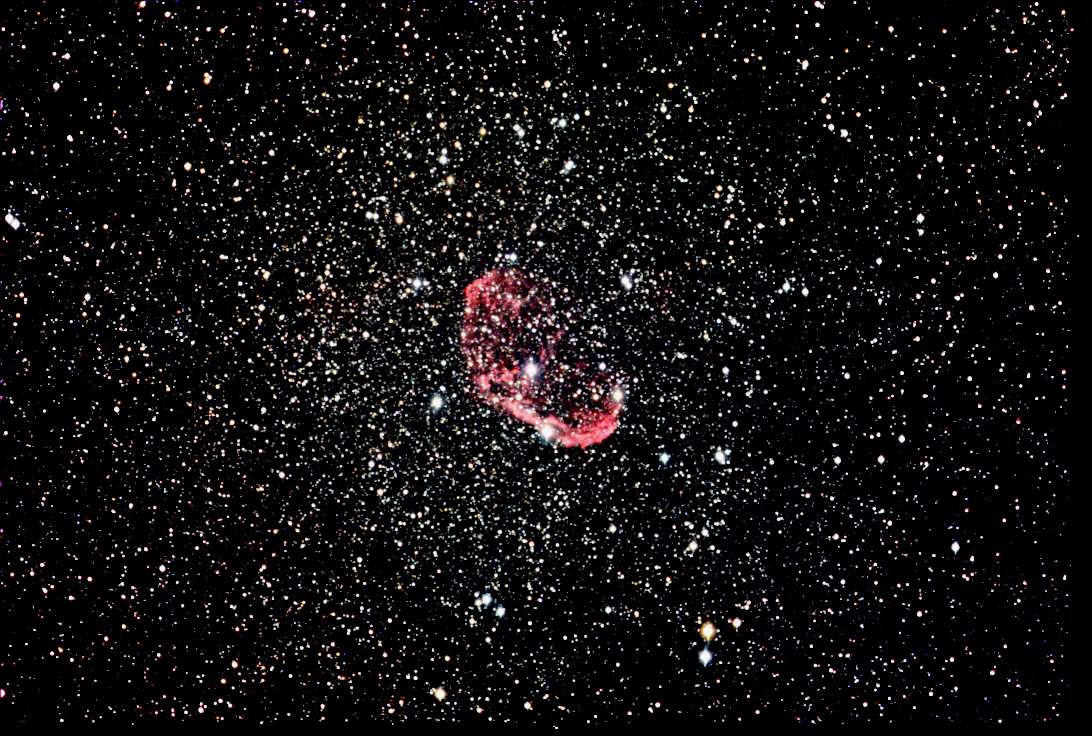
This wider field view of the Crescent Nebula shows the elliptical nature of its shape better. Still not apparent here is the background emission nebulosity. Taken in September, 2006, at Morristown with a Televue NP101 refractor (f/5.4). LRGB + Ha exposures were stacked to yield this image.

This is an L-Ha-GB image of the Crescent Nebula. The dominance of energy emission in the hydrogen alpha wavelength range (~656.3 nm) is demonstrated here by the wealth of additional detail visible in the central area of the nebula. Taken in September, 2006, at Morristown with a Televue NP101 refractor (f/5.4).
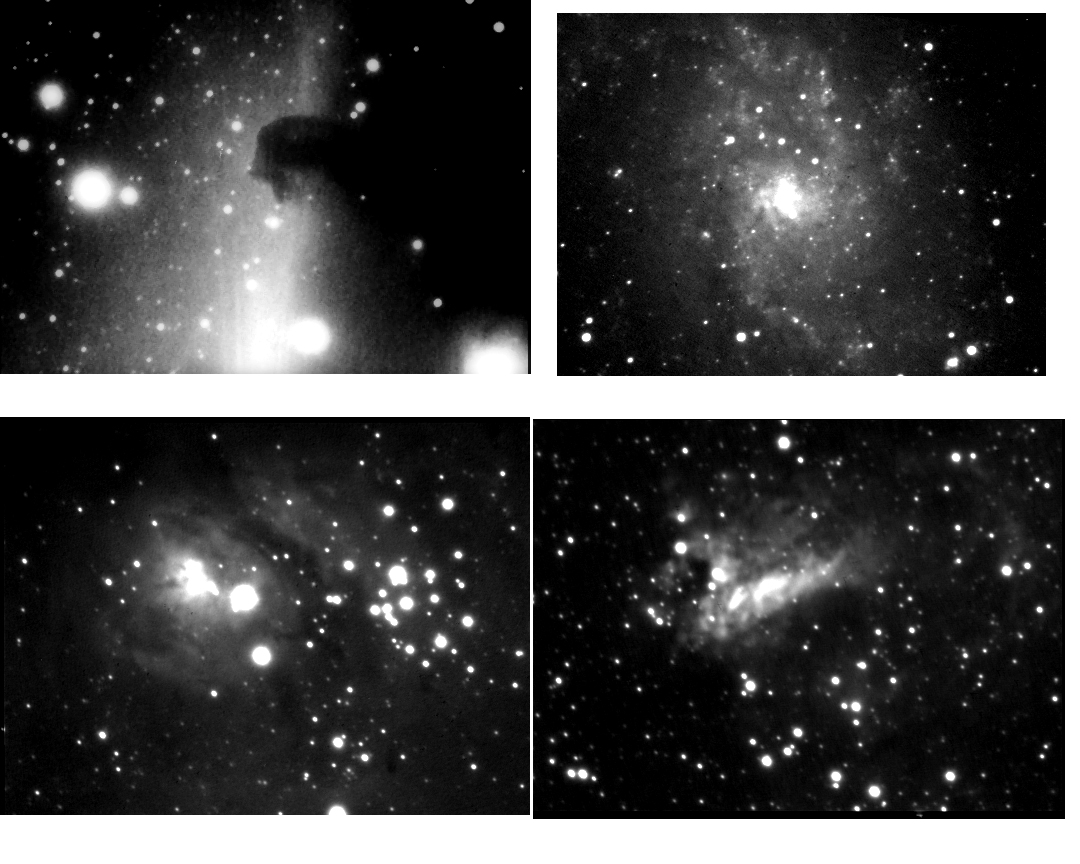
Collage of luminance only images. Clockwise from upper left: Horsehead Nebula , M33, Swan Nebula and the Lagoon Nebula. These images were taken using the ST-2000XM camera with the 6" refractor piggybacked on the 24" R-C telescope at Star Hill, New Mexico, in October, 2005.

M42, the great nebula in Orion (upper left) and the nearby nebula M43 (lower right). The image was taken at Morristown with the 10" Meade LX200GPS. The 4 very bright stars at the center of the pinkish region in M42 at the upper left are known collectively as the Trapezium.